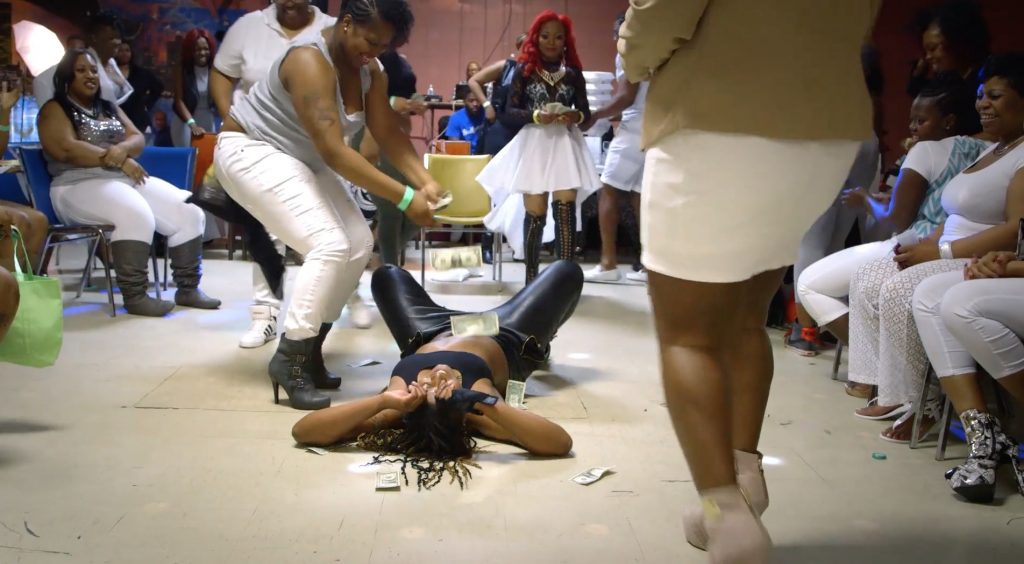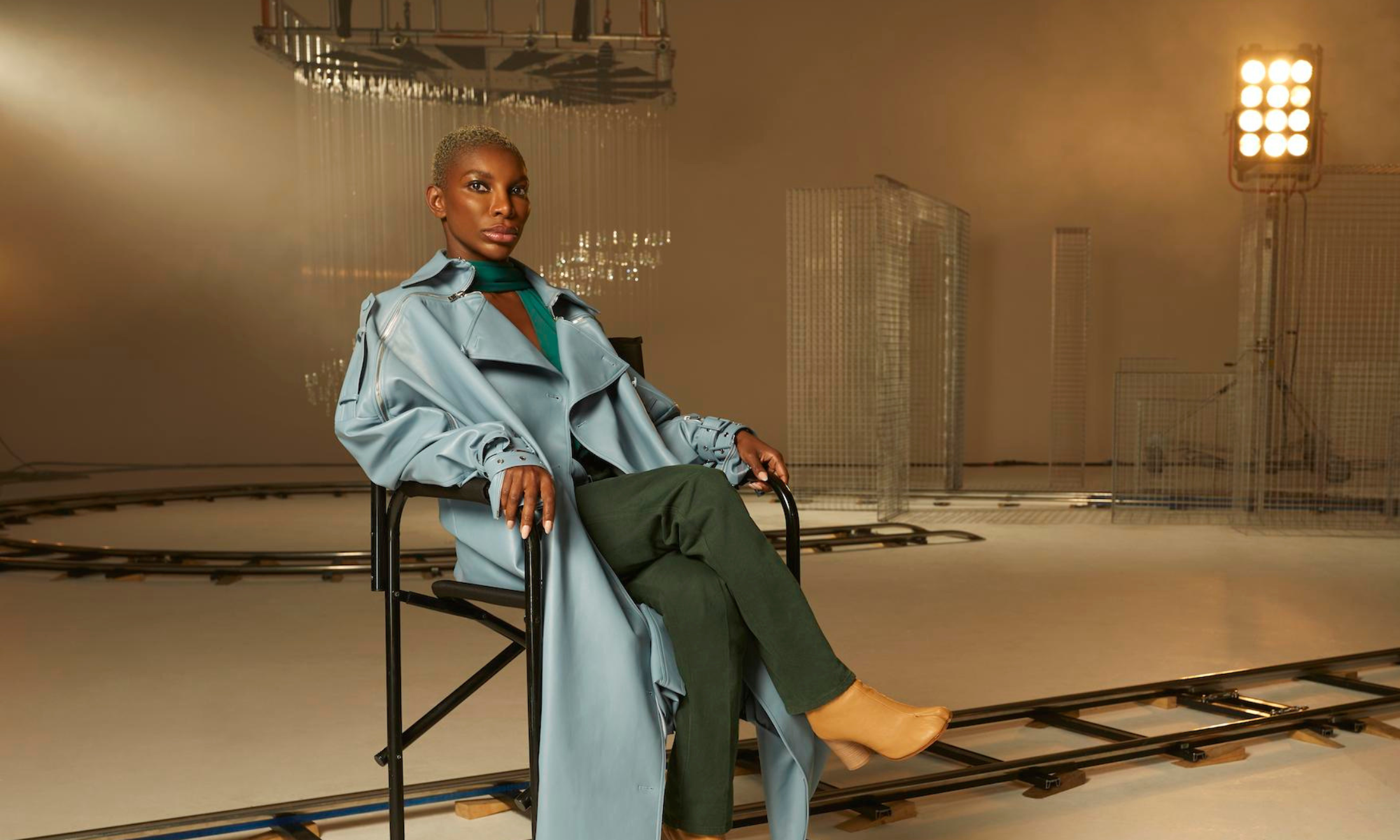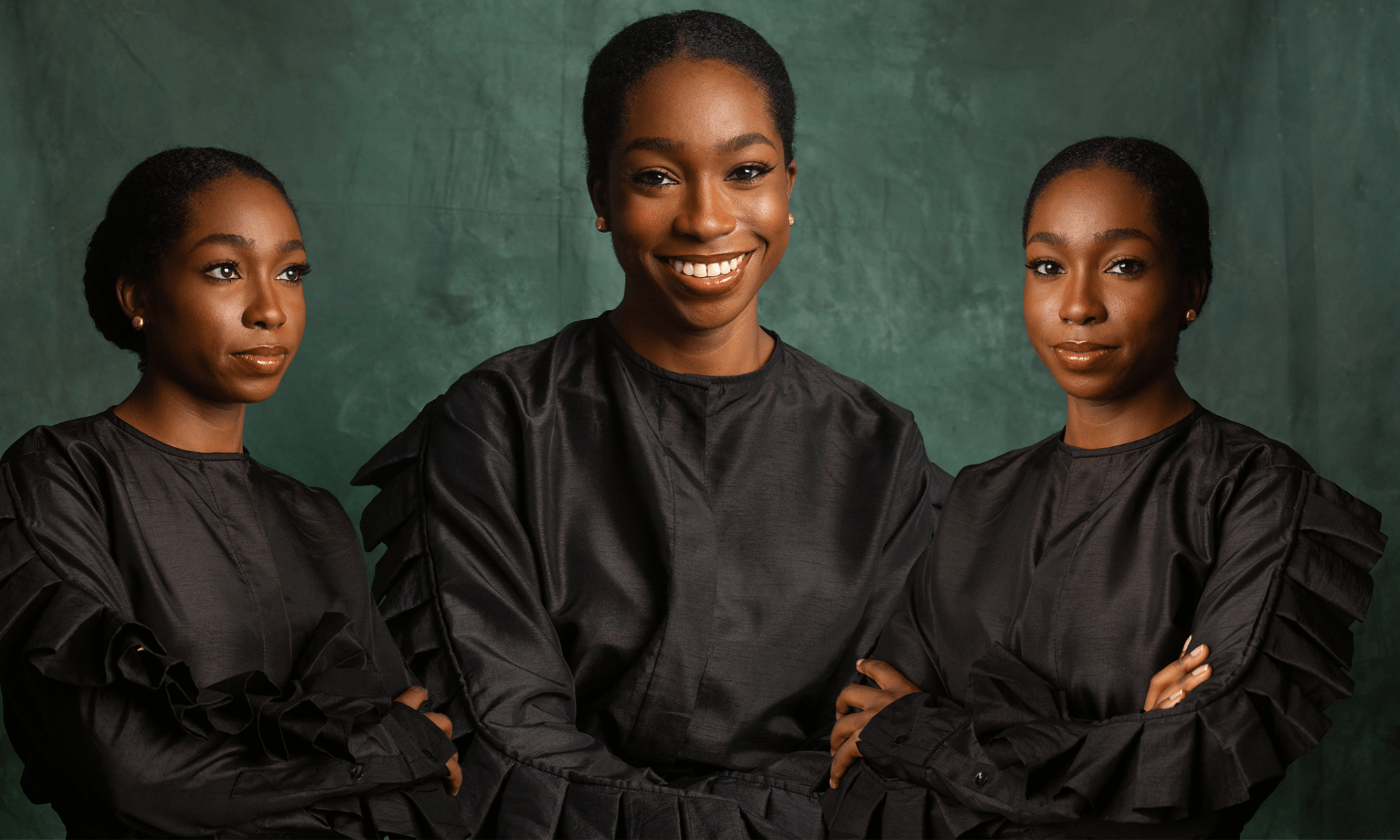
Back in June, gal-dem headed up north to watch this year’s pool of documentary storytellers selected to screen at Sheffield Doc Fest. Following on from last year’s top hitters Amanda Lipitz’s Step, Yance Ford’s Strong Island and Catherine Gund’s Chavela, I arrived anticipating laughter, tears, anger, education and to be pushed outside of my comfort zone… I just wasn’t prepared to feel it all in the space of one screening.
This One’s for the Ladies is roughly an 80 minute look at three years covering New Jersey’s after dark “male and doms” strip party scene. When the sun goes down, the Nasty Boyz come out and one unassuming karate school transforms into a raucous hot spot filled with black woman entrepreneurship, sisterhood and lots and lots of dick.
The film introduces us to those that frequent the joints, the stars that perform each night, the organisers and all of their lives outside of the club. Within the space of 10 minutes, the audience is transported from seeing dry-humping on stage, to a nostalgic tour through a derelict neighbourhood, heading onwards to a soup kitchen run by the mothers and grandmothers of the community. To describe This One’s for the Ladies as merely a film about stripping would be to do it a complete disservice. The picture is a heartwarming, reflective, poignant portrait of the intersections of black life in America, focused on the women who uphold the community in a space of pure escape, joy and control.
I sat down with director, producer and editor extraordinaire, Gene Graham, to talk about his filmmaking process, the community in Newark, New Jersey, the respect and dues paid to queer culture and of course, the leading ladies.
The film is great and it was really lovely to see such a well rounded and full look at the performers and their lives both inside and outside the club. Is this complete look something you set out to show?
For sure. I definitely wanted to know what’s going on outside of the club. Taking it back a little, after watching Magic Mike I thought to myself where are all the black guys? A strip show without any black guys just is not how it is in real life.
I was watching all these YouTube clips of promos from a crew out of Ohio called Lazy Eye Productions and you see the women in Akron, Ohio, which is a city that made a lot of tyres and now that industry is gone and there’s already structural racism there. Then you take out a whole industry, and what are people left to do? But there’s all these ladies in the club enjoying these shows and doing their thing, so what’s going on for them outside of the club?
I figured if I followed that you could start to have conversations about black people in this country. In the U.S it’s always about race, but people are always trying to distance from that. I didn’t want to do that. This movie is a conversation between you and me, that’s the way I look at it. If someone wants to come in on that conversation, no problem, but this is a chance for us to be real, for us.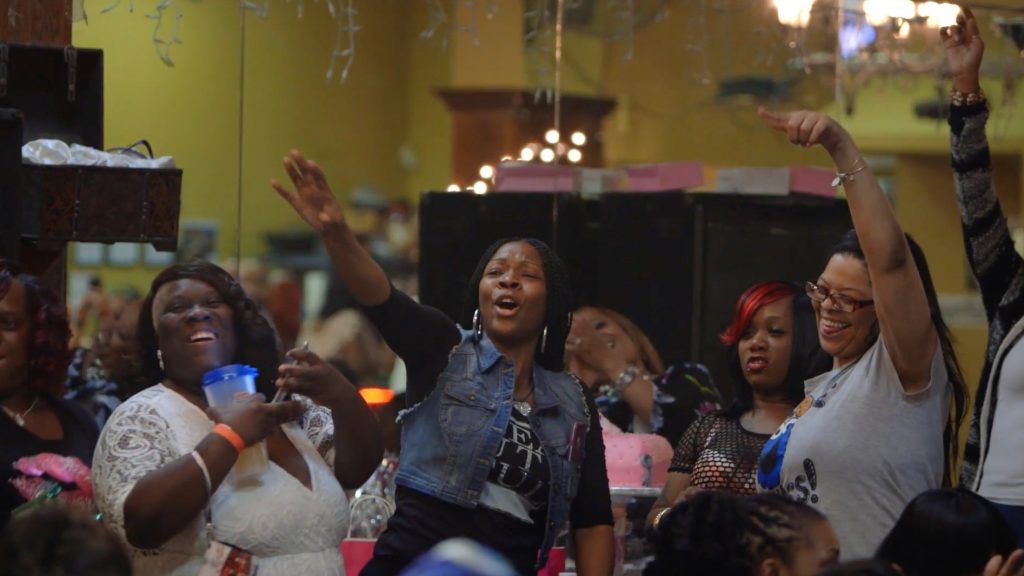
At a couple of points there was clear acknowledgement from performers Young Ryder and Fever that what they knew about the industry came from their gay and trans family members and that is to be recognised, respected and is not something that’s up for debate.
It’s interesting and I’m being honest here I was a little surprised at how open and fluid sexuality and gender was in that room. That’s one of those things that I didn’t know and was like, that’s great.
A lot of times the black community are shown as having a lot of animosity, but there’s a whole lot of people who have always had a gay cousin and a gay auntie and are gay and audiences aren’t shown that. I’m gay in New York and hearing Young Ryder talk about what he had learnt from his favourite uncle was great and a nice sex positive thing that we don’t see a lot.
“The guys, some of them are great, but at the end of the day they could just stand there and whack out their dick and people would be screaming, but the doms put on the whole thing”
I also really enjoyed Blaze, the only woman performer shown on this circuit, talking about the different people she encounters at the shows. We see her in a position where she’s desired and supported by the audience and the MCs. Outside of online spaces and queer cinema, I don’t think we directly really see masculine women in film being desired in such a full way, as opposed to a plot twist or something to sensationalise.
It’s one of the best parts, when Blaze did that drop and the MC is going off: “You can put money on these dicks you can put money on a female, she is up here doing her motherfucking thing. That’s one of us up there ladies, let’s support her like we’re supposed to.”
It is so right that you can put money on men, and you can put money on a woman and she owns that and she’s doing her thing. The doms are really a big part of the show and everybody is standing on their feet because they’re really giving you a show. The guys, some of them are great, but at the end of the day they could just stand there and whack out their dick and people would be screaming, but the doms put on the whole thing.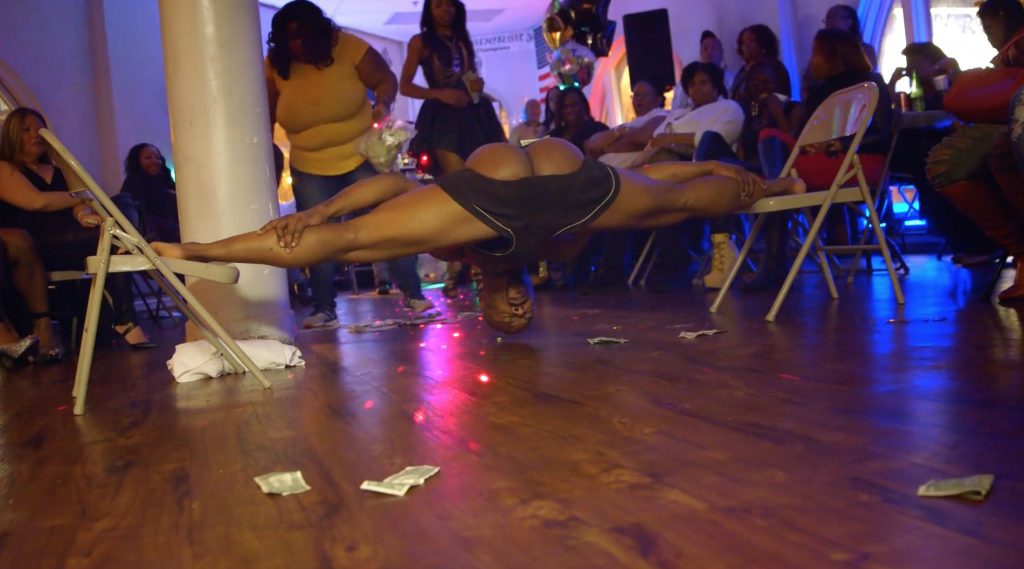
The film was very explicit in showing how black women uphold the community, from Poundcake who invites people, who otherwise wouldn’t eat, in to her home to join her family for dinner, to C-Pudding who lost her brother to police violence and attends a rally alone with a poster in honor of Samaria Rice, Tamir Rice’s mother to Sweet Tee who is hands down the best hype woman I’ve ever seen. Was this an intentional thing to be so vocal in the celebration of black women?
I’m definitely more vocal than other filmmakers, but I feel like maybe I shy away from making that statement and speaking on behalf of black women because I don’t know how black women are going to take this movie. My hope is that people will love it and see the city and know it’s the real thing. It’s a celebration of all of the things in the community. There’s nothing wrong with celebrating the Viola Davis’ of the world, but there’s also a lot that is still here and it was intentional to show that.

